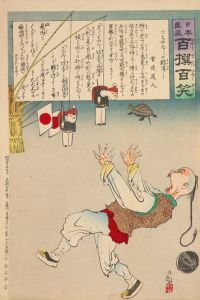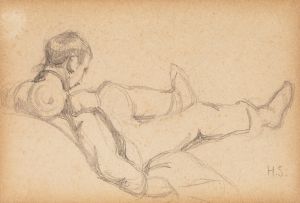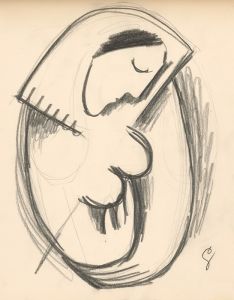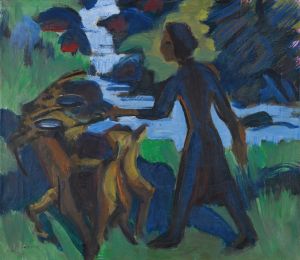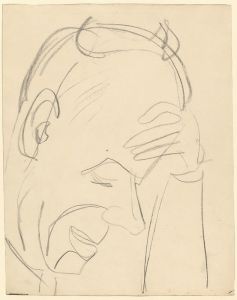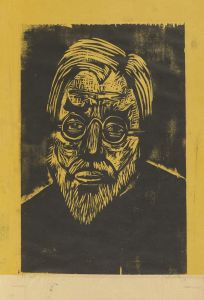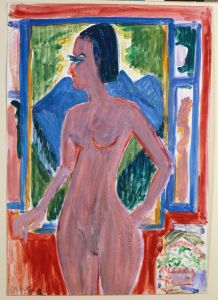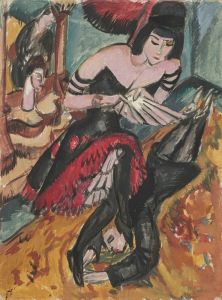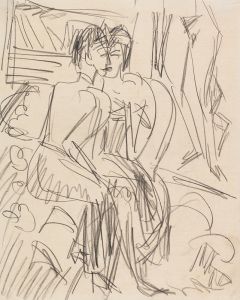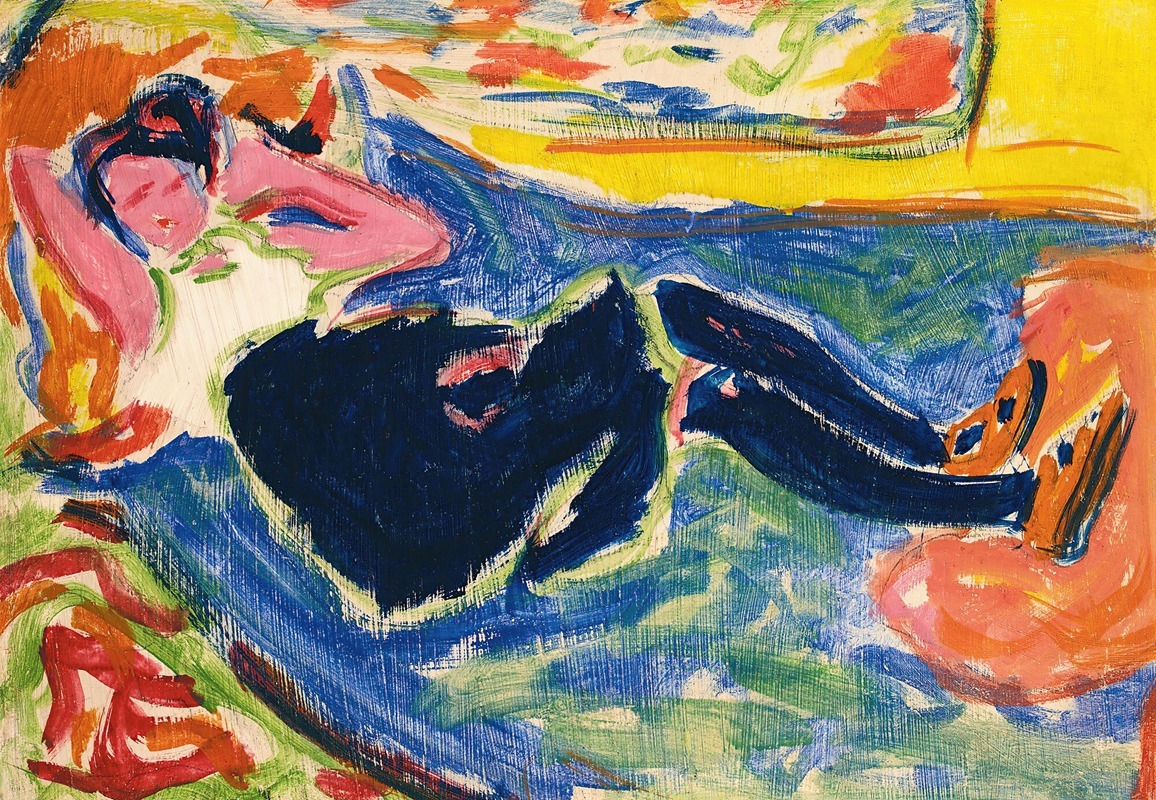
Woman With Black Stockings – The Black Grete
A hand-painted replica of Ernst Ludwig Kirchner’s masterpiece Woman With Black Stockings – The Black Grete, meticulously crafted by professional artists to capture the true essence of the original. Each piece is created with museum-quality canvas and rare mineral pigments, carefully painted by experienced artists with delicate brushstrokes and rich, layered colors to perfectly recreate the texture of the original artwork. Unlike machine-printed reproductions, this hand-painted version brings the painting to life, infused with the artist’s emotions and skill in every stroke. Whether for personal collection or home decoration, it instantly elevates the artistic atmosphere of any space.
Ernst Ludwig Kirchner, a prominent German expressionist painter and one of the founding members of the art movement Die Brücke (The Bridge), created numerous works that explored themes of modernity, urban life, and human emotion. Among his extensive body of work is the painting "Woman with Black Stockings – The Black Grete." This artwork reflects Kirchner's characteristic style, which is marked by bold colors, dynamic compositions, and expressive forms.
"Woman with Black Stockings – The Black Grete" is believed to have been painted during Kirchner's most productive period, in the early 20th century, when he was deeply engaged with the ideals of Die Brücke. The movement sought to break away from traditional academic art and embrace a more raw, emotional, and spontaneous approach to painting. Kirchner and his contemporaries were influenced by non-Western art, particularly African and Oceanic art, as well as the works of Post-Impressionist artists like Vincent van Gogh and Paul Gauguin.
The painting depicts a woman, identified as "Black Grete," wearing black stockings. The subject is rendered in Kirchner's signature style, with elongated forms and exaggerated features that convey a sense of vitality and psychological depth. The use of black stockings as a focal point in the composition highlights Kirchner's interest in the human figure and his exploration of sensuality and modern fashion. The bold, contrasting colors and dynamic brushstrokes further emphasize the emotional intensity of the piece.
Kirchner often drew inspiration from his surroundings, including the bustling urban life of Berlin and the people he encountered. Many of his works from this period feature women as central figures, reflecting his fascination with the changing roles of women in society during the early 20th century. While the specific identity of "Black Grete" is not well-documented, it is consistent with Kirchner's practice of portraying models, acquaintances, or individuals from his social circle.
The painting is an example of Kirchner's ability to capture the complexities of human experience through his unique artistic language. It also serves as a testament to the broader goals of Die Brücke, which sought to create art that was both innovative and deeply connected to the emotional and social realities of the time.
Today, Ernst Ludwig Kirchner is regarded as one of the most influential artists of the German Expressionist movement. His works, including "Woman with Black Stockings – The Black Grete," continue to be celebrated for their boldness, emotional resonance, and contribution to the development of modern art.





